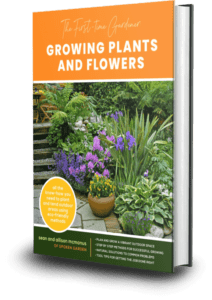Enhance the layout and design of your garden with this basic beginner’s guide to garden texture including how to identify, and incorporate, various features of texture into your own garden.
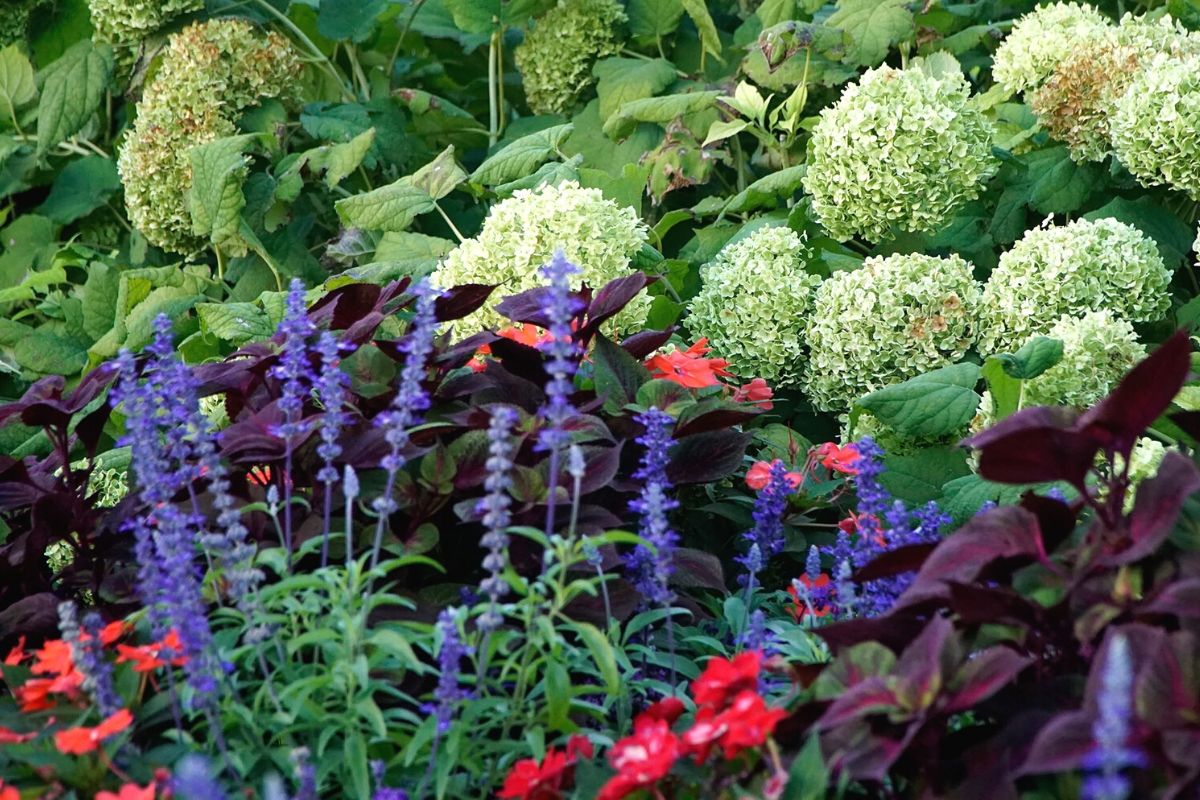
Notice how the various shapes and sizes of the flowers and foliage create garden texture.
How would you define the appearance of your garden right now? Is it soft? Bold? Believe it or not, a lot of new gardeners have never before considered their garden’s texture.
Most people only think of the color of their plants and flowers, or their shape (especially if you worry about keeping slugs from eating your plants and flowers).
However, designing a garden with different textures of plants can help you create a space that is stimulating to all your senses.
And, thinking of plants and flowers in these terms does not have to be intimidating.
Read on below to learn about the different categories of texture and ideas for how you can incorporate texture into your own garden.
Oh, and if you want to plant bulbs this spring for beautiful summer flowers, check out How to Plant Your Garden Bulbs (eBook)
What is Texture in Your Garden?
Garden texture is often hard to define and therefore can be a bit tricky.
Ultimately, you can find texture everywhere in your garden, if you know how to look for it. And, it does not have to relate to just to your plants either. Texture can be found in your hardscapes, like rocks, stones, pathways, etc., as well as within trees, shrubs, grasses, and garden art.
The difficulty arises in the way each person describes texture because it’s completely subjective. Each gardener has their own preferences, experiences, and observations from which to explain or create texture.
However, it does not have to be that complicated because, in general, texture relates to the shapes, sizes, colors, feels, etc., of leaves, plants, foliage or any materials in your garden (rocks, art, etc). This can include an individual plant or flower, or a grouping of flowers with various shapes.
Also, the smoothness or roughness of leaves or other plant material can be considered texture.
Types of Texture
Usually, texture, as it relates to gardening, is grouped into three main leaf or plant shape categories: fine, medium, or bold/coarse.
This can depend on how detailed you want to get in your planning and design, and what overall experience you want to create in your garden.
Fine textures differ from bold textures and lie at two extreme ends from each other as far as the plant material selected, the overall look of the space, and/or the feel of the garden. Medium textures fall somewhere in the middle.
Each type of texture can be used in various ways to design a garden. Within these three categories of garden texture, various types of plants or materials would be used to complete the garden design and achieve a fine, medium, or bold look.
Examples of plants or materials you could incorporate for texture are listed below although this is by no means an exhaustive list.
- Flowers
- Shrubs
- Foliage
- Trees
- Groundcovers
- Grasses
- Herbs
- Succulents
- Mosses
- Hardscapes
- Garden art
Fine Textures
This texture refers to plants, grasses, or other materials that are wispy, delicate, feathery, and soft.
Plant material flows softly like grasses blowing in the wind. Flowers have small blossoms and usually small leaves. Plant material has a light, airy feel if it has a fine texture.
As long as slugs or other pests don’t eat your plants’ leaves until you have had a chance to enjoy them.
Examples of plant material that fit this category would be:
- Coreopsis
- Fescue grass
- Lilies
- Lavender
- Heather and Heaths
- Agastache
- Thyme
- Campanula
- Oregano
- and much more.
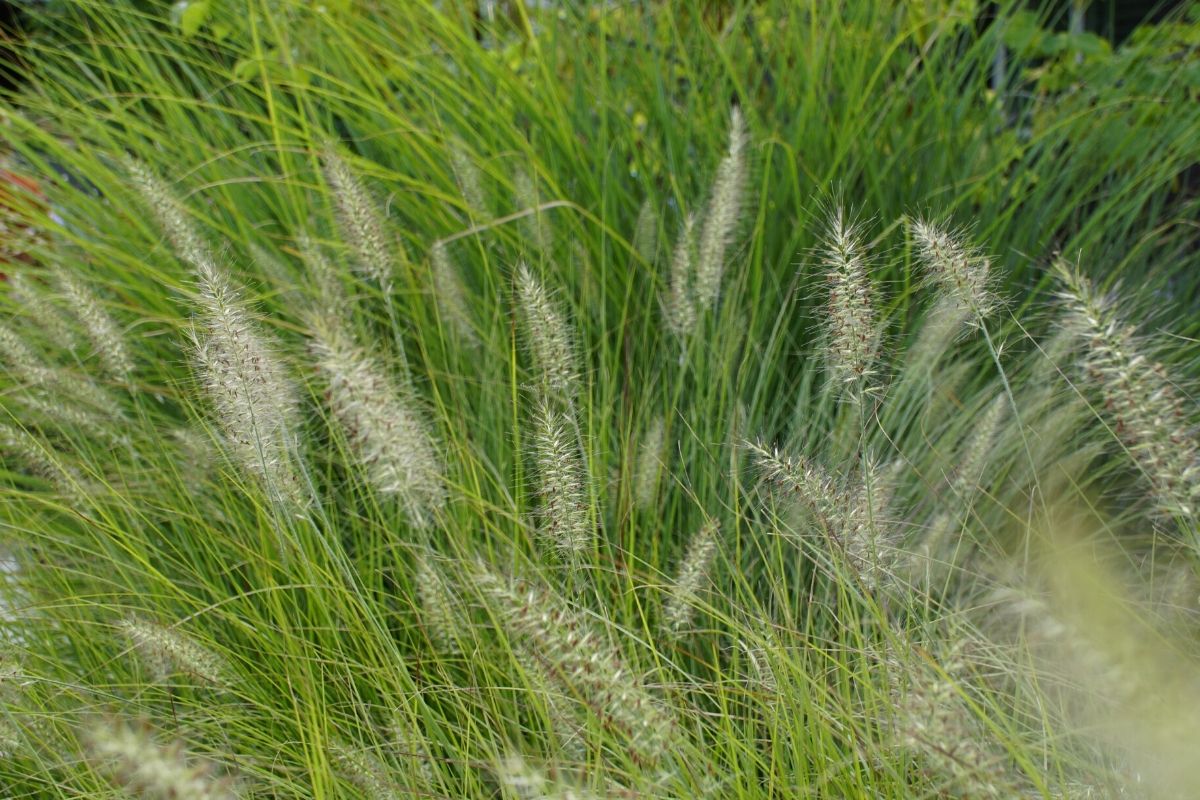
Notice how the ornamental grasses have a soft, wispy, airy feel to them?
Bold Garden Textures
This type of texture includes plants, grasses, foliage, and more that have wide, strong, and/or dramatic leaves or flowers.
Examples of plant material that fit this category would be:
- Mondo Grass
- Hosta
- Primrose
- Dracena
- Pampas Grass
- Palms
- Yucca
- Magnolia trees
- Flax
- and more.
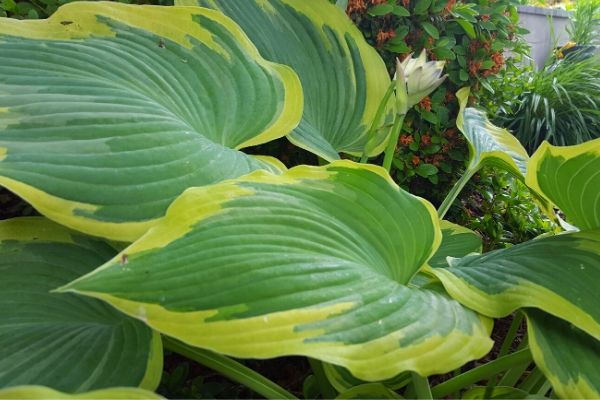
Medium Textures
This type of texture includes all plants, flowers, grasses, etc., that fit somewhere between fine and bold. So, pretty much everything not classified as fine or bold.
Examples of plant material that fit this category would be:
- Shasta Daisy
- Purple Coneflower
- Holly shrubs and trees
- Boxwoods
- Black-eyed Susan
- Laurel shrubs and trees
- Rhododendron and Azalea
- Zinnia
- Lamb’s Ear
- Abelia
- and more.
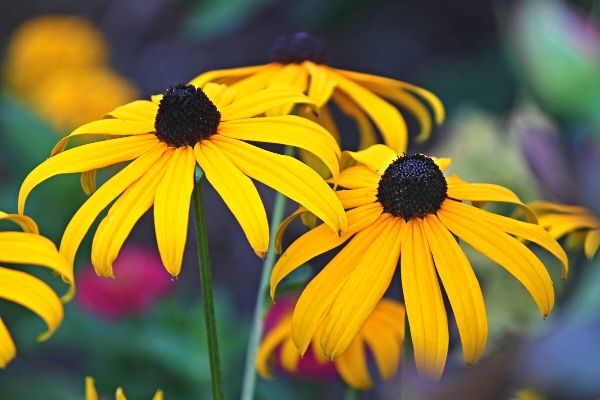
How to Incorporate Texture into Your Garden
Below is a list of ideas and suggestions for you to consider as you start thinking about designing your garden with texture in mind.
Our goal is to inspire you and provide several ideas to get you thinking about the kind of garden you want to create.
Overall, mixing and grouping textures with various sizes and shapes of plants, flowers, foliage, or grasses (in addition to many other types of plant life) can help you to create your garden design.
The important thing to remember is to always plant the right plant in the right place. Another is you are the boss and designer of your own garden, so you can do what you want.
Additionally, don’t get so worried about creating a perfect, magazine-worthy garden full of texture. Just experiment and have fun!
Further Resources
- Right Plant, Right Place – DIY Garden Minute Ep. 134
- How to Choose the Right Plant for Your Garden this Spring – Ep. 49
- How To Attract Pollinators To Your Garden Like A Boss!
Conclusion for Garden Texture
Whatever texture you prefer or draws your eye, now you can recognize better what that texture is and start adding more plants to your garden with this in mind.
Remember that texture is subjective and definitely in the eye of the beholder.
Now we want to hear from you!
What type of garden textures, plant shapes, and colors appeal to you? Let us know by leaving a quick comment below and thanks!
Thanks and see ya in the garden!
~Sean and Allison
P.S. Find us on Pinterest, Twitter, Facebook, and Instagram so you don’t miss a thing!
Garden Texture References:
- Horticulture Magazine “What Texture Mean in Terms of Plants and Garden Design”
- Better Home and Garden “The Elements of Good Garden Design”
- The Spruce “Garden Design With Plant Texture”
Spokengarden.com is a participant in the Amazon Services LLC Associates Program, an affiliate advertising program designed to provide a means for sites to earn advertising fees by advertising and linking to Amazon.com
Enhance the design and layout of your garden with this basic beginner’s guide to garden texture including how to identify, and incorporate, various features of texture into your own garden.

